Trekking Gorilla safari in Uganda or (RWANDA) ,standing ten meters across the most famous of all Africa’s beasts, the showstopper on the primate parade in forested mountain slopes of Bwindi Impenetrable National Park will leave you breathless with excitement and exertion. An incredible African jungle summer adventure of your life that should be on your next vacation bucket list to uganda. Bwindi Impenetrable National Park in southwestern Uganda and its neighbouring Mgahinga National Park protect more than half of the world’s last endangered mountain gorillas, which has made Uganda a bucket list destination for primate adventurers. And what compels us to bring this little unknown African destination to your knowledge.
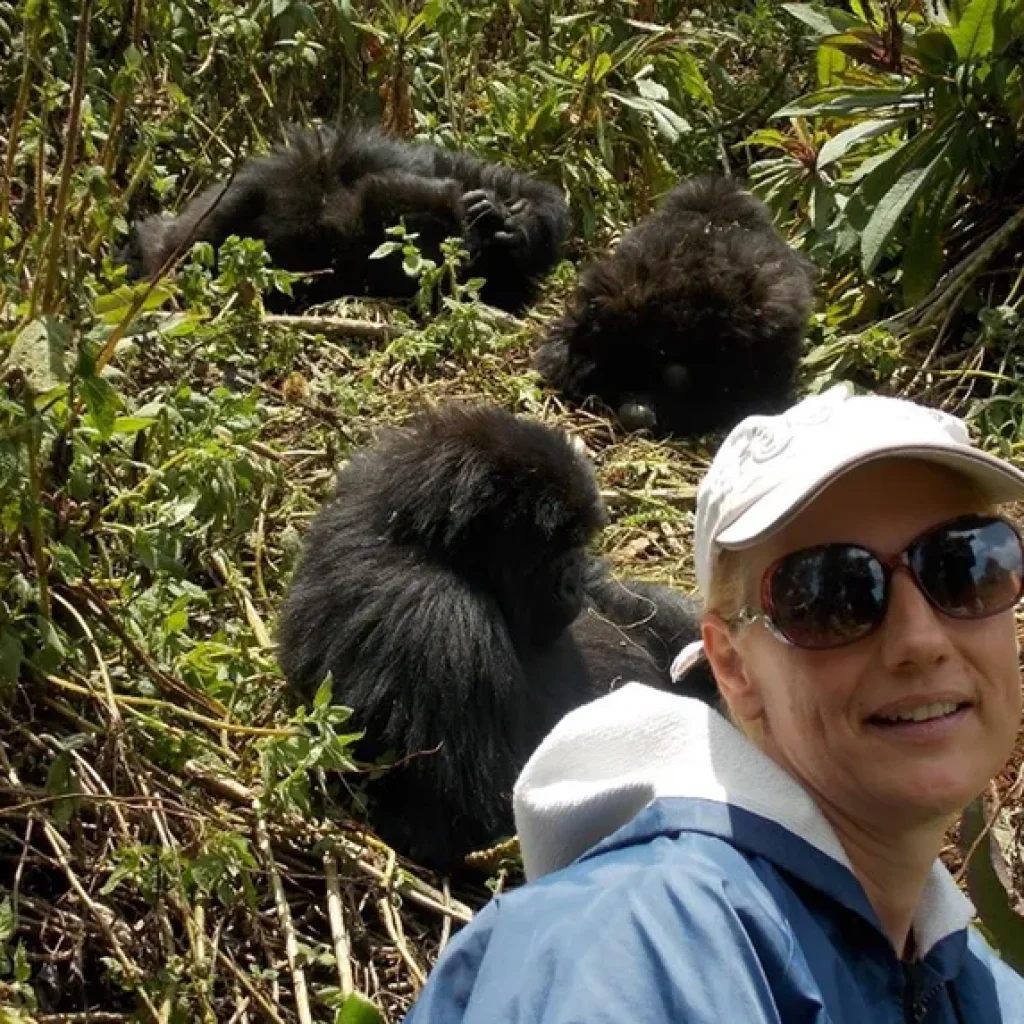
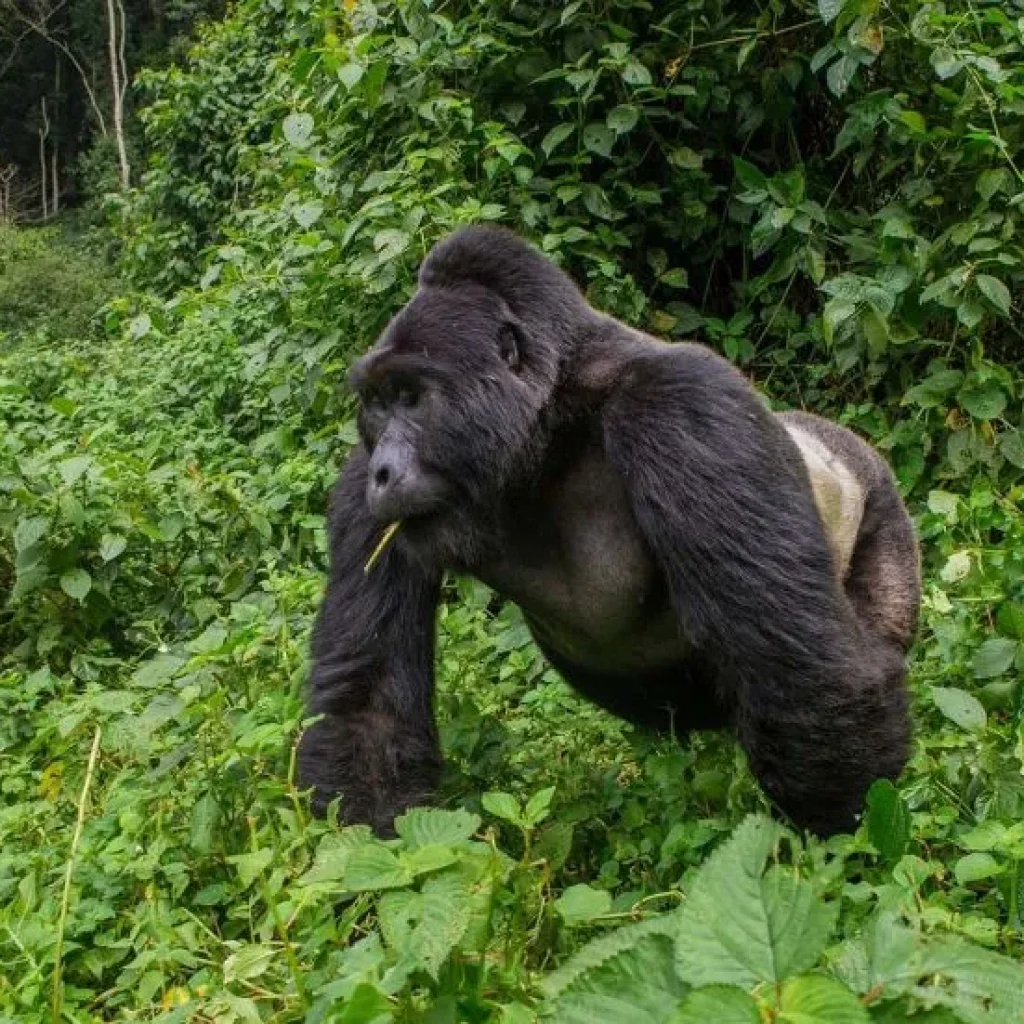
Thousands of tourists flock to Uganda each year to spend a heart-throbbing hour sitting quietly in the misty impenetrable jungles with a troop of human-habituated forest giants as they do their thing, munching, grooming, and dozing. The quiet authority of the 180 kg silverback, the maternal anxieties of the females, and the boisterous boundary-pushing of the adolescents all appear uncannily human as you admire the creatures’ connection with the natural world. The experience feels more profound than mere wildlife watching in the back of a four-by-four safari truck.Here, we give you six reasons why trekking gorillas in Uganda’s misty mountain jungles, seeing, and spending incredibly memorable moments with a human-habituated mountain gorilla family group should be your next bucket-list summer adventure in Africa
A troop of mountain gorillas takes a rest after a foraging morning in Bwindi Impenetrable National Park, Uganda.
1. You’ll Be Trekking With Half the World’s Mountain Gorillas.
The overall mountain gorillas population in the world is 1,063 heavily protected in two regions located in a small mountainous region in East Africa. The Virunga Volcano Mountains region (straddling the Uganda, Rwanda, and DR Congo borders) and Uganda’s southwestern mountainous Bwindi Impenetrable National Park. Uganda has an edge with more than half of the gorillas heavily protected within its two National Parks: Bwindi Impenetrable National Park and Mgahinga National Park, which shares territory with Rwanda’s Volcanoes National Park, and DRC’s Virunga National Park.Bwindi Impenetrable National Park, a UNESCO World Heritage Site, is arguably one of the oldest “last Edens” on the African continent. The 124 sq mi (32,000 ha) park is a teasing glimpse of how the world once was. Apart from the mountain gorillas, Bwindi protects some of the most pristine virgin forest plants, primates, other 120 mammal species, and many endangered wildlife.Mgahinga Gorilla National Park is not far from Bwindi, a 13.1 sq mi reserve contingent with Rwanda’s Volcanoes National Park in the south and DRCs Virunga National Park in the west. The park’s outstanding features are the three imposing Virunga mountains; Mount Muhabura, Mount Gahinga, from which the park gets its name, and Mount Sabyinyo. Together, Mgahinga and Bwindi have 20 human-habituated gorilla family groups available for tourism in five gorilla tracking sectors, with four located around Bwindi Impenetrable Forest. So, trekking gorillas in Uganda promises more gorilla viewing opportunities than its East African counterparts.
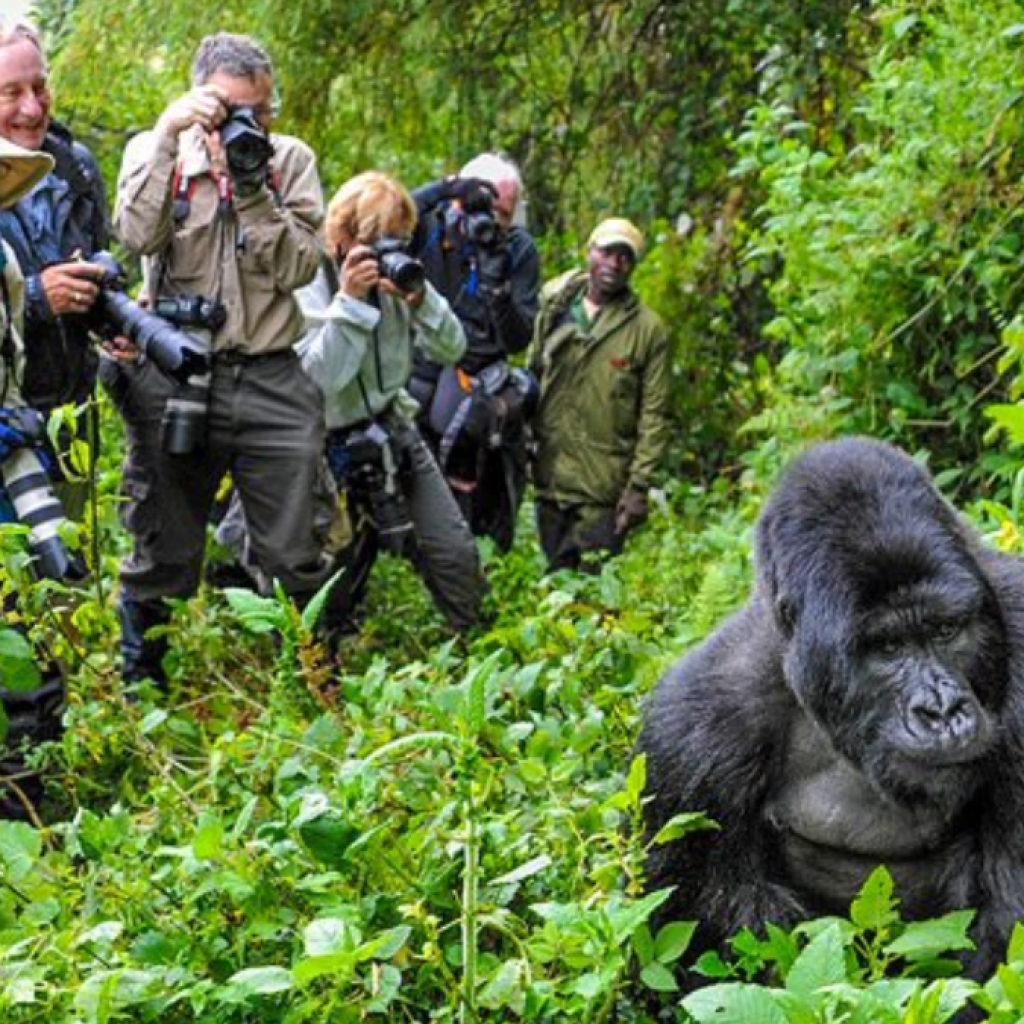
2. You Contribute To Gorilla Conservation plus giving back to Community Endowment.
Trekking gorillas in Uganda is not only an African bucket list adventure but also a sustainable ecotourism travel experience that contributes heavily to the conservation of gorillas and helping local communities.The price of Uganda gorilla permits may seem expensive ($700 per person,) especially for backpackers, yet the money is put to exceptional use in financing habitat protection, monitoring gorilla health, and creating a safe haven for gorillas against poachers. Mountain gorillas are an endangered species, and it’s impressive that the last few decades have seen their population rise from near extinction to slightly above 1,063 mountain gorillas because of gorilla tourism. The mountain giants could survive extinction because you went gorilla trekking in their impenetrable jungles and contributed to their wellbeing while being rewarded with a bucket list African adventure.Your gorilla permit goes a long way by paying the rangers who patrol the rainforests every day to keep the poachers away. Poaching poses one of the biggest threats to mountain gorillas. If you want to know how dangerous a ranger’s job is in these rainforest jungles, watch Netflix’s big hit, VIRUNGA — an incredible true story of a group of brave people risking their lives to build a better future in a part of Africa the world’s forgotten.Travelling with Local Operators like SAVANNAH EXPLORE LTD also makes sure your gorilla safari adventure positively impacts the local communities around the gorilla sanctuaries. The company encourages hiring a local porter for your excursion into the misty jungles. Reaching the gorillas is a strenuous endeavour. In southwest Uganda, the terrain is uneven, steep and there are no visible trails, but the tracker cuts the way through with a machete. If you’re not a seasoned trekker, you’ll want to have someone to help you physically navigate through. Porters come from the communities that heavily populate Uganda’s gorilla sanctuary that could have been looking for living in the jungles and maybe killing the gorillas. For just $20, you will have generously given to a family that lives on less than $1 per day. So join the hearty adventurers and go see the mountain gorillas in Uganda.
3. Trekking Gorillas in Uganda is Much More Affordable
Started back in 1994, gorilla tourism was the only simpler way for the Uganda government to finance the protection of the endangered giants. However, the number of tourists had to be regulated at a sustainable level to avoid disrupting the gorillas’ way of life within their natural setting. So now trekkers have to go through the gorilla trekking permit process to make it to the daily viewing, which is also highly regulated.In Uganda, the gorilla permit costs $700 per person, less than half of what Rwanda charges. Daily excursions are restricted to eight people per gorilla family group. There are only 20 human-habituated gorilla groups (that means that the gorillas will happily welcome you in their natural within a few meters without harming you).Therefore, you have to book your permit months in advance because there’s a long queue of tourists hoping to get that chance of seeing the largest primate on earth.Although Mgahinga offers the same experience, your best gorilla trekking experience will be in Bwindi Impenetrable National Park because it has multiple gorilla family groups (about 19 groups) and trailheads spread around the park’s boundaries. You’ll also get the best affordable accommodation options in Bwindi around the trailheads. Expert trackers lead out small groups of eight tourists per gorilla group from the starting point into the impenetrable jungles, escorted by two armed rangers, and spend at least one hour with the gorillas when they find them. There is also an option of spending at least four hours with the gorillas, but that would be with a wild gorilla family that is not fully human-habituated if you can stand the adrenaline jolts.Tourists traversing the Bwindi Impenetrable Forest
4. An Authentic Raw Adventure Experience To The Gorillas
Driving through the emerald rugged cultivated slopes of southwestern Uganda, you’re suddenly hit by the enchanting beauty of the land but also how getting to the mountain gorillas is not for the faint-hearted. Mountain gorillas live at elevations of 8,000 to 13,000 feet. Trekking through steep slopes to find the gorillas promises to be an authentic jungle adventure. If you love the adventure challenge, trekking gorillas in Uganda will serve you the right dose of the African jungle experience. The Bwindi Impenetrable Forest, like its name infers, can only be traversed on foot. You’ll be trekking uneven terrain, through a misty jungle with no used footpaths, with a local tracker clearing your way with a machete.It may seem like an impossible undertaking, but once the dark bodies against the green background spring up unexpectedly from the undergrowth, your seemingly tiring adventure will light up the airy jungle atmosphere. This is what bucket list adventures are made of.

5. And More Primates Along Your Adventure
Uganda is the world’s primate adventure central. Not only does it boast of the world’s two of the four great apes, chimps, and gorillas, but it is also home to more than a dozen other primate species from a little further down the evolutionary ladder.Trekking gorillas up the Mgahinga mountain jungles, one is bound to bump into the other endangered primate species, the golden monkeys. These tiny furry primates, the size of a two-year-old, live high up in bamboo forest zones of the park, sharing the same habitats with the gorillas. Golden Monkey tracking is comparable to tracking gorillas but not quite as challenging. So the golden monkey experience is something you can add to your gorilla safari in Mgahinga. You may come across any of the eleven primate species on a lazy nature hike in Bwindi. Among the impenetrable jangle’s foliage, the black-and-white colobus monkeys swing in the forest’s canopies, Lhotse’s monkeys, De Brazza monkeys, Red-tailed Monkey, Blue Monkey, Potto, Demidoff’s Galago, Spectacled Galago, Baboons, unhabituated Chimpanzees, and of course the mountain gorillas. The park offers 4-9-hour walking adventures through the oldest trails crisscrossing the jungle, where tourists get to experience the jungle’s richness.Further north is Kibale Forest National Park, home to over 1,500 chimps in southwest Uganda, including several habituated troops. It’s one of the best places in Africa to observe our closest living relatives, and most Uganda adventures will include a day or two in Kibale.Viewing Tree Climbing Lions in Queen Elizabeth National Park is one of the highlights of Uganda Safaris
6. Wildlife Viewing Game Safaris Are Excellent
Uganda is not only good for primates. Nestled into its modest borders is an impressive spread of other habitats, including lakes, semi-deserts and swathes of tropical savannah. In other words, Uganda does well with big-game safaris. The country’s most famous safari park, Queen Elizabeth National Park, right next to Bwindi, offers memorable wildlife viewing adventures to complement gorilla trekking in Bwindi. Traversing the plains, you’ll come across herds of elephants and buffalo. Lions preying on the abundant antelopes are easy to spot. A boat ride on the Kazinga channel that bisects this jewel of a park will bring you to not only spectacular views of hippos and insanely giant crocodiles but also birds in bewildering profusion. Further north of the country are two of the country’s largest savannah parks, Murchison Falls and Kidepo Valley National Parks, protecting some of the country’s endemic species like giraffes, zebras, cheetahs, wild dogs, and dry-country species like the caracal, aardwolf, greater and lesser kudu, mountain reedbuck and Guenther’s dik-dik. Although your main adventure attraction may be gorilla trekking in Uganda, you’ll find the country a fulfilling bucket list adventure destination. The possibility of seeing the great apes, tracking human-habituated mountain gorillas and chimpanzees in their natural setting, combined with a savannah game viewing experience and highly sought-after birds like the shoebill, is quite an eclectic African safari mix.
Start Planning Your Next Vacation Adventure
Chat to an expert
EMAIL; info@savannahexploreltd.com
CALL /WHATS APP ; +256-706-424-534
Get in touch with us and one of our travel experts will answer any questions you may have and help create your dream trip.
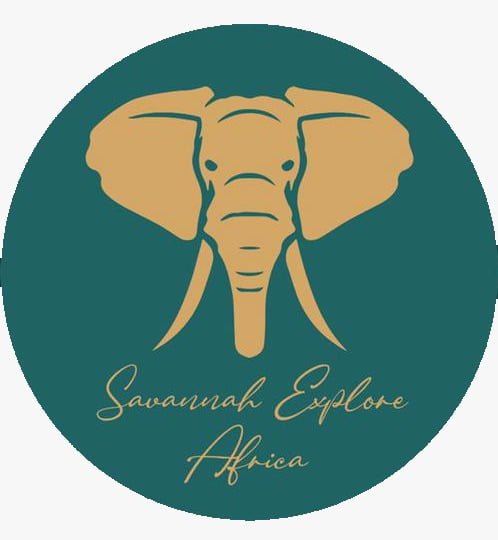
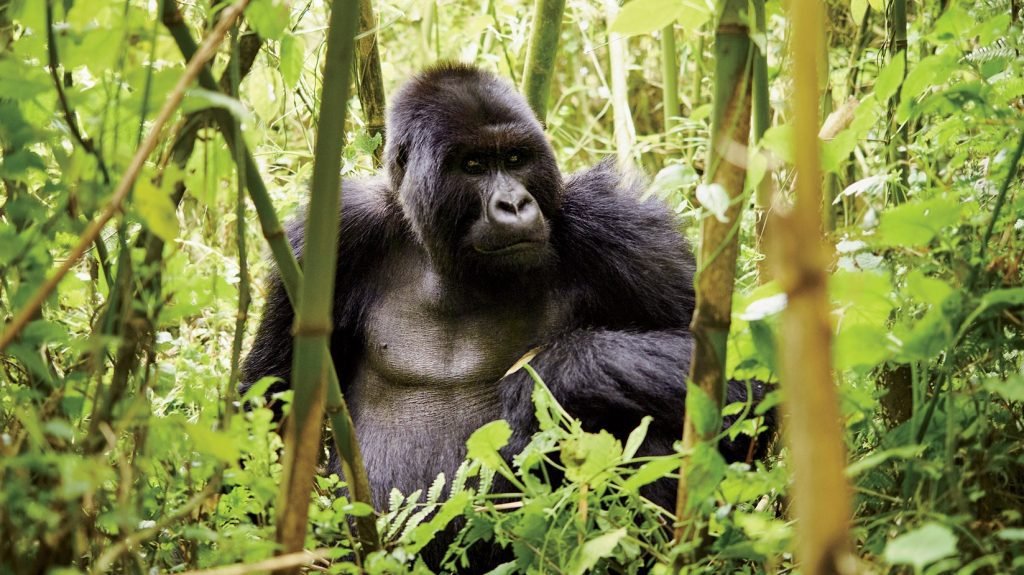
0 Comment